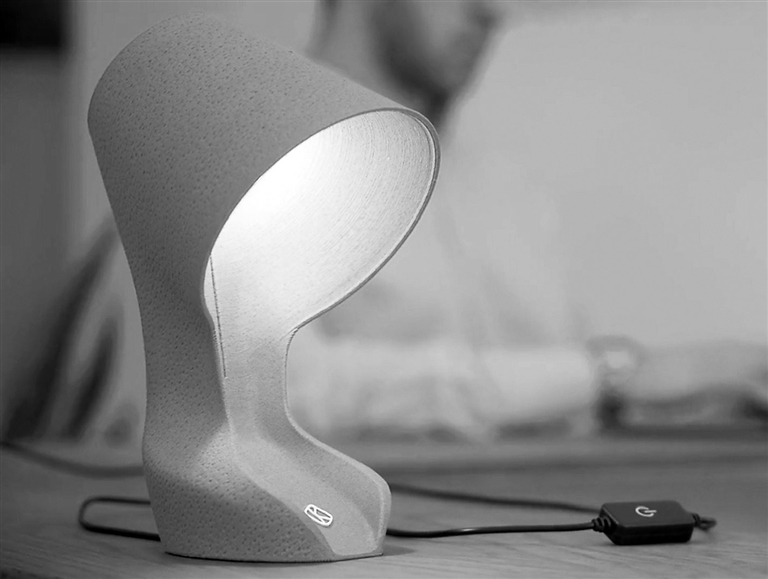
A PLETHORA of substances can be used for 3D printing these days. Most people go for conventional plastics like ABS (acrylonitrile butadiene styrene) or polycarbonate. Krill Design, however, has opted for fruit. The Italian design agency, which specializes in the development of organic materials, has taken discarded Sicilian orange peels and transformed them into a completely natural and compostable biopolymer, then used this material to 3D-print its new Ohmie lamp. The biopolymer has been in development for years as it is a progression of the work the agency did for Autogrill, the Italian-based multinational catering company best known for its food outlets in airports and motorway service stations. Krill created its original “WasOrange” material from the fruit’s waste product, then used this to 3D-print rudimentary sugar sachet holders, essentially bowls, for Autogrill last year. Now Krill has managed to improve on its formula sufficiently to fashion a dinky biodegradable and dimmable lamp made from the peel of two to three Sicilian oranges added to a biopolymeric base derived from vegetable starches. “The link between the base biopolymer made from the fermentation of vegetable starches and the added material from organic crops is they need sugars in order to bond,” said Domiziana Illengo, Krill’s marketing manager. “Oranges are particularly rich in, not exactly sugar, but carbohydrates, which on a chemical level is basically the same thing. And so this helps us develop a sturdy material.” The main issue for Krill in the construction of the lamp compared to the simple bowls it made for Autogrill was getting the material to support the heavier top section while still allowing it to stand securely. Apparently, the thing that really distinguishes Ohmie from other lamps, besides being made from the skin of oranges, is that, thanks to its construction material, the desk light has a somewhat diverting smell. “It’s similar to orange cookies, not simply oranges, because through the process the material gets sort of toasted,” said Illengo. Krill states that there could be quality-control issues. The tricky aspect is the fact that not all 3D printers are created with the idea of being able to print bioplastic materials enhanced with organic matter. “People wanting to experiment at home may find it hard to get the right heat,” Illengo says. “Within a 3D printer there is a chamber in which the material gets melted, then it flows out from a nozzle on the other side. But as there are no 3D printers specifically created for biomaterials, it’s very hard to get that accurate temperature.” This final version of Ohmie is priced at US$70, takes about two hours to print, and ships with a USB dimmer cable and LED bulb already fitted, so you don’t have to worry about replacing it or getting the bulb strength wrong and further toasting your orange-peel light. As well developing their tangerine dream further — Krill wants to create an entire “citrus line” of products — the next stage for the design company is, somewhat whimsically, to print a coffee table made from coffee. (SD-Agencies) | 
